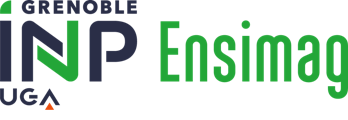Number of hours
- Lectures 18.0
- Projects -
- Tutorials -
- Internship -
- Laboratory works -
- Written tests -
ECTS
ECTS 1.5
Goal(s)
An image may be considered as an application from a domain of R2 (or R3 in the case of three-dimensional images ) with values in a subset of R (or R3 for color images). Many algorithms of edge detection, pattern recognition, denoising, are based on partial differential equations formulations.
A first part of this course is to introduce an Eulerian representation of regions of interest of the image, the level-set method. We begin by giving the main principles of the Eulerian description of the interfaces and what we can extract from it geometrically . Then we will detail some active contour algorithms developed in the past years. We will explicit some numerical tools used to implement those algorithms.
Optimal transport is an old theme that has been updated recently with the results of Cédric Villani and his medal.
The use of this tool in image analysis was proposed by Benamou-Brenier then by Haker et al. Their work has made it possible to develop a method for interpolating between two or more images in a way that takes into account the displacement of one image on the other. This makes it possible to determine intermediate images between two images (morphing) or to calculate distances between images.
This course is also an opportunity to present modern optimization methods (primal-dual type algorithms) that can effectively calculate this transport plan and also solve image analysis problems such as inpainting, deconvolution, etc.
Emmanuel MAITRE
Content(s)
The first part of the Level-set course will be conducted by Charles Dapogny, a CNRS researcher at the Jean Kuntzmann laboratory, and a specialist in this method and shape optimization.
He will introduce the method and its applications in various fields including shape optimization.
In a second part, I (Emmanuel Maitre) will present the applications of these level-set methods to the classic problems of image analysis like segmentation.
The problems of inpainting (how to remove the bars of a cage in a photo) or deconvolution will be put in a unified framework on which recent optimization methods based on primal-dual algorithms will be presented.
Classical tools from optimization and applied analysis. Those will be recalled if necessary.
Reading of a scientific article and short presentation talk with slides, plus a short written note (2 pages) on that article.
N1=P (résumé article + soutenance)
N2=P
The exam is given in english only 
The course exists in the following branches:
- Curriculum - Math. Modelling, Image & Simulation - Semester 9 (this course is given in english only
 )
) - Curriculum - Math. Modelling, Image & Simulation - Semester 9 (this course is given in english only
 )
)
Course ID : 5MM2531C
Course language(s): 
The course is attached to the following structures:
You can find this course among all other courses.
J. Sethian : Level Set & Fast Marching Methods, Cambridge
S. Osher & R. Fedkiw : Level Set Methods and Dynamics Implicit Surfaces, Springer
S. Osher & N. Paragios (2003) : Geometric Level Set in Imaging Vision and Graphics, Springer
S. Agenent, S. Haker and A. Tannenbaum, Minimizing flows for the Monge-Kantorovich pro- blem, SIAM J. Math. Analysis, 35 :61–97 (2003)
C. Villani, Topics in optimal transportation, Graduate Studies in Mathematics, Vol. 50, AMS (2003)
L.C. Evans, Partial Differential Equations and Monge-Kantorovich Mass Transfer, Notes de
cours sur http://math.berkeley.edu/~evans/
M. Fortin and R. Glowinski, Augmented Lagrangian Methods : Applications to the Solution of Boundary Value Problems, Studies in Mathematics and its Applications 15, North-Holland, Amsterdam, 1983.
V. Caselles, R. Kimmel and G. Sapiro , "Geodesic Active Contours ", International Journal of Computer Vision (1997)
T. Chan and L. Vese , "Active Contours without Edges", IEEE Transactions on Image Processing (2001)
G. Aubert et. al., "Image Segmentation Using Active Contours: Calculus Of Variations Or Shape Gradients", SIAM (2003)



